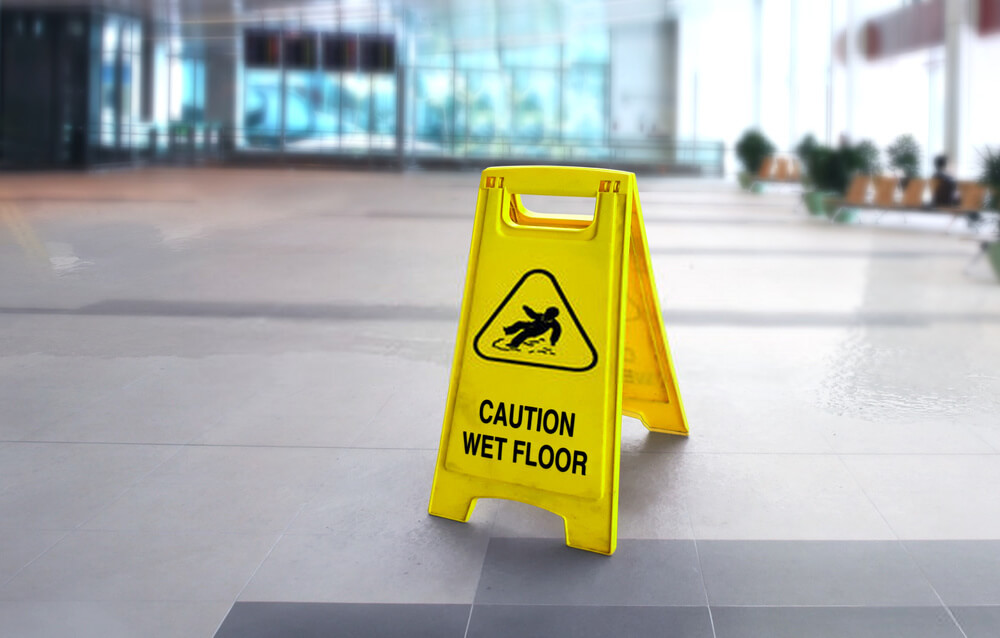Safety in the workplace is the most significant feature for employees and employers alike. While not all risks can be mitigated, measures can be put in place to further reduce the risk. In the past couple of years, unions have campaigned against unsafe and unhealthy working conditions and advocated for the strictest laws to make sure that people arrive home in good health. Even at present, reforms are needed to make the workplace as safe and healthy as possible. Slips, trips, and falls caused by wet surfaces, spills, and other hazards make up a significant percentage of workplace accidents. They can lead to serious types of accidents, which is why they need to be reported.
Workplace health and safety is all about managing risks to protect people and the business. Strong leadership brings together managers, workers, suppliers, contractors, and customers. To prevent incidents such as slips, trips, and falls, it’s necessary to identify the risks and, most importantly, control them. Put simply, it’s necessary to proactively manage the workplace environment to help lower the risk of injury to employees, as well as customers. When slips, trips, and falls occur, they’re typically attributed to carelessness or clumsiness. The vast majority of accidents can be prevented. It’s necessary to decide what suitable and effective control measures will prevent these types of accidents.
The Big Causes of Slips, Trips, And Falls
Slips, trips, and falls have become a prevalent health and safety risk. They result in countless injuries, of which mention can be made of soft tissue injuries, bruises, cuts, fractures, and, last but not least, dislocations. A slip can be caused by various things, not just the obvious spillages. What happens is that the foot fails to hold the ground without sliding. Dusty surfaces can create a slip hazard, making it impossible for the shoes to grip the floor. Unsuitable footwear can increase the risks of slips by making individuals prone to poor balance and bad gait. Loose, worn, or backless slippers are the perfect example of unsuitable footwear.
Trips happen when someone suddenly catches their foot on an object or surface. More often than not, people trip on low obstacles that aren’t immediately apparent. Examples include loose mats, edges on flooring, open drawers, and untidy tools. Falls are a hazard found in many workplaces. They can be the result of complex events affecting a worker. Falls from height, for instance, happen due to an unguarded opening in the floor or scaffold, a missing guardrail, and so on. More than one control measure is needed to provide the best protection. It’s essential to concentrate on the real risks; in other words, those that stand to cause harm.
If Someone Is Involved in A Slip and Fall Accident at Work, They May Have Legal Recourse Outside of a Worker’s Compensation Claim
The law provides benefits in the form of medical costs and lost wages for people who’ve been injured at work. More exactly, the injuries are covered by worker’s compensation laws. Worker’s compensation has nothing to do with fault, which translates into the fact that it’s not necessary to prove that the employer or coworkers did anything wrong to reap the benefits. People who’ve been injured at their work place should immediately seek advice from a personal injury lawyer in modesto, ca to find out about their legal rights
A personal injury case is a civil lawsuit that’s filed against the party who caused the pain and suffering. Gross negligence can occur if someone was forced to climb without a harness or work in a space with no ventilation system. Nations that share a legal heritage have adopted different approaches to the issue of compensating people injured by others’ actions. Great Britain and Australia, for example, discourage litigation by prohibiting legal professionals from being paid with a fraction of the proceeds if the plaintiff wins. If you’re curious to know how cases involving slips, trips, and falls are handled in the UK, do your homework.
If someone sustains an injury, they need medical attention. What is more, they’ll miss work. Medical bills, receipts, and pay stubs are used to calculate economic losses. If the individual is permanently disabled, they can be reimbursed for ongoing and future medical expenses. Non-economic losses are awarded for emotional distress, loss of enjoyment of life, etc. in certain cases, the spouse might receive compensation for loss of consortium, which makes up for the loss of companionship and intimacy. At any rate, the defense lawyer will try to push the blame onto the victim. Even if there have been conditions for the issue, it’s necessary to prove that the victim was liable so that they can be held accountable.
Practical Steps for Preventing Slips, Trips, And Falls
Minimizing the risk of accident involves identifying hazards, evaluating the risks associated with these hazards, implementing and maintaining control measures, and reviewing risk control measures. In many instances, straightforward measures can immediately control risks. It’s recommended to review one’s actions on a regular basis. There are many ways to control slips, trips, and falls in the workplace, such as:
- Preventing floors from becoming contaminated
- Using appropriate cleaning methods
- Taking into account the flooring and working environment
- Providing suitable footwear
- Thinking about people and organizational factors.
Attention needs to be paid to the fact that workplace safety is everyone’s responsibility. That being said, employees should clean spillages or make arrangements for them to be cleaned. If there are items on the floor that someone could trip over, the situation should be addressed. Most importantly, work accidents should be reported so that the information can be used to prevent further incidents. Unforeseeable events happen from time to time and the employer isn’t always at fault for the issues that occur at work. Even if the main burden of responsibility for health and safety lies with the employer, employees have their part to play.

No Responses